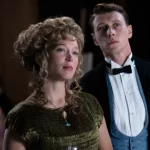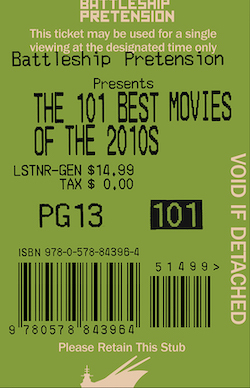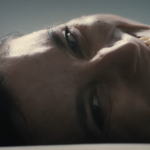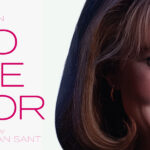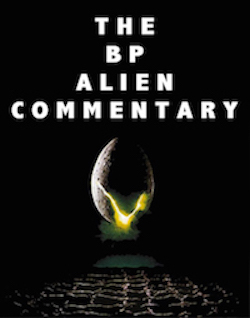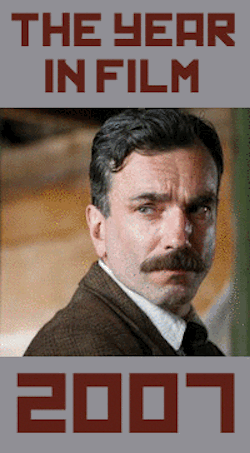The American 50’s: Written on the Wind, by Aaron Pinkston
For his follow up to the magnificent All That Heaven Allows, Douglas Sirk was determined to crank all his themes, styles and his genre to the highest output with Written on the Wind. Though I ultimately prefer last week’s film to this one, there is no denying that Written on the Wind is bold and stir-crazy, very fun to watch. For those I referenced in my previous post that may think of melodramas as stodgy and endlessly romantic, I urge you to see this film — it might shock you. Like all stereotypes, there is a pattern and reasoning why the melodrama categorization exists but Written on the Wind is a nearly romanticless film, instead about power, sex and violence.
This film is a prime example of the exorbitance of the wealthy and the dark side of power. And what better way to explore these themes than through the filthy rich community of an oil family in rural Texas? It’s been the setting of great drama and soap opera, and for good reason — it is a look into an extreme society full of the stuff typically reserved for modern reality television. We’re talking the kind of wealthy people that have their town named after them, as if they possess it, as well. We are introduced to Kyle Hadley (played by Robert Stack — yes he was an actor, too) as we’re told he flew from Texas to New York City for the sole purpose of ordering his favorite steak sandwich. While in NYC, he attempts to woo Lucy Moore (Lauren Bacall) in a way you think most out-of-touch billionaires would, by whisking her away to Florida on his private plane and showering her with extravagant gifts. Lucy isn’t the gold-digger type, though, and so while she genuinely likes Kyle and the conversations they’ve had, she rejects him. It is only through Kyle’s realization that to be close to her he needs to be a normal dude and take her to the movies and to lunch and normal dude stuff does she decide to marry him. He doesn’t even need to do those things (we don’t see him fulfill these promises throughout the film) but merely suggest that his love for her has nothing to do with the monetary power he possesses.
The power dynamics in Written on the Wind are completely tied to social class, with the Hadleys balanced against Lucy and Kyle’s life-long friend Mitch Wayne (played by Sirk staple Rock Hudson). Wayne is for all intents and purposes a part of the Hadley family, basically an adopted son, but he is obviously a different sort of human. Though he has as much money as he could spend through his association with this family, his “man of the Earth” upbringing is what has shaped his personality — giving credence to an idea that it’s not money that corrupts, but wealth. We’re told that Mitch’s father is a modern Daniel Boone-type though it is also implied that he could have given up his simple life to be just as wealthy as the Hadleys; maybe he could have been another oil tycoon. Without spelling it out, the film has a pretty definite “nature vs. nurture” slant, with the morally upstanding characters not influenced by being raised with a certain type of wealthy elitism. The idea that Mitch is a “man of the Earth” is interestingly integrated into the fact that the Hadley’s wealth comes directly from the Earth, though we never see Kyle or sister Marylee actually do any work. The fact that Mitch is a trained geologist who takes an active role in Hadley Oil could also indicate an argument that working for your money prevents one from being driven by the power of wealth. Though there are other factors playing into the dramatic split between these best friends, a lot of it boils down to their differences in social stature, regardless that they both are financially secure.
Without showing any sex on screen, the film is completely preoccupied with it — in any case, it is definitely the most concerned of all the films in this series. Firstly, you can’t ignore that this film is absolutely lousey with phallic imagery — from the very long sports car driven by Kyle to the oil rigs and pumps to the final image of Marylee and the trophy, it’s all deliberate and tough to miss. The phallus as power comes into the film’s narrative with Kyle’s “problem” of low sperm count. Throughout the film he talks about wanting a family, an important topic I’ve brushed upon nearly every week, with the importance multiplied given Kyle’s need for an heir to his wealth. When Lucy can’t get pregnant, Kyle quickly puts the blame on her, stating that she is “not all right” as a woman because she can’t have children — his masculine arrogance completely ignores the idea of the true problem, supposedly his low sperm count. When Kyle is informed by his doctor, he takes the news pretty hard. His reaction is pretty strange, seemingly beyond the devastation that he may never have a family. He almost gives the impression that he has become impotent or emasculated, as if he is no longer a man. Usually, man’s sexual power is portrayed with the act of having sex, not the act of birthing children but with power and wealth so tied together in Written on the Wind, it’s clear that the end of his familial legacy is devastating.
You can’t talk about Written on the Wind without discussing Marylee Hadley, one of the wildest film characters of the period. Dorothy Malone won the Oscar for best supporting actress, and that recognition is well deserved. The film revs up as soon as her character is introduced and every scene she takes part in has a life not seen elsewhere in the film. There is no way to be hyperbolic when talking about Marylee as a film character — in many ways she seems to break the very fabric of society. Fights break out, murder is threatened over her while she is gleefully laughing at her power over people. Her unhinged sexual state literally causes the death of her father in one of the most bizarre moments I’ve ever seen. She isn’t just passive in this destruction, though, as she manipulates people and situations to the point of explosion — you could link her with almost all of the tragic events near the conclusion of the film. In this way, Marylee isn’t a high model of the ideal woman, but she’s so atypical of the 1950’s stereotype that she seems attractive in a twisted sort of way.
In the very typical 1950’s way, she’s also a victim, constantly rejected by her family and good-natured men, possibly because she is so far from the boxed up ideal of what a woman should be like. She isn’t fighting for women’s rights or even the idea of individualism, but she does represent something of the female activist, willing to stand out against the crowd — becoming a ideological danger to the men around her. Her affection for Mitch proves to be pretty complicated given this theme, with the film posing the question of whether she could be cured through marriage to Mitch. If they were wed, her seething sexuality would ideally be restrained in the hopes of starting a family, but Mitch isn’t convinced. To him, her “problem” isn’t being fiercely undomestic, but deeper and untamable.
Written on the Wind is a thoroughly satisfying conclusion to this series on Hollywood in the 1950’s. From an unheralded master of the decade, the film explores many of the major topics in an explosive manner, without any real need for subtext, laying it all on the table and convincingly. It may not be thought-provoking like Vertigo and Fixed Bayonets! or as emotionally rich as Rebel Without a Cause and All That Heaven Allows but it is as scintillatingly enjoyable as anything could be in the buttoned-up presentation of the 1950’s.







